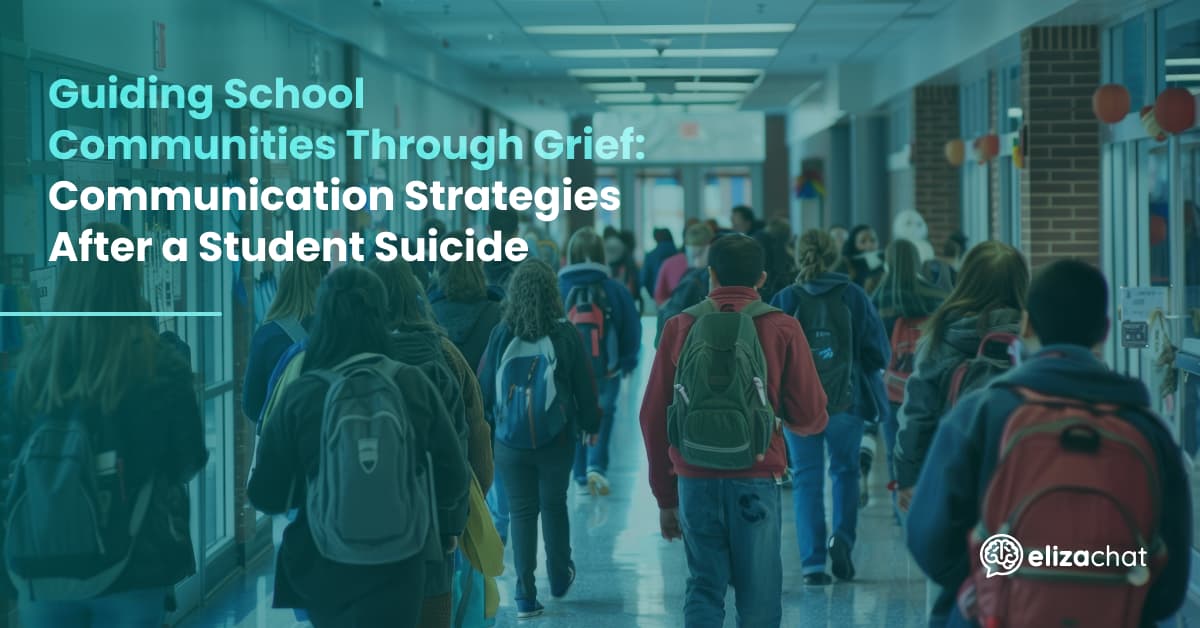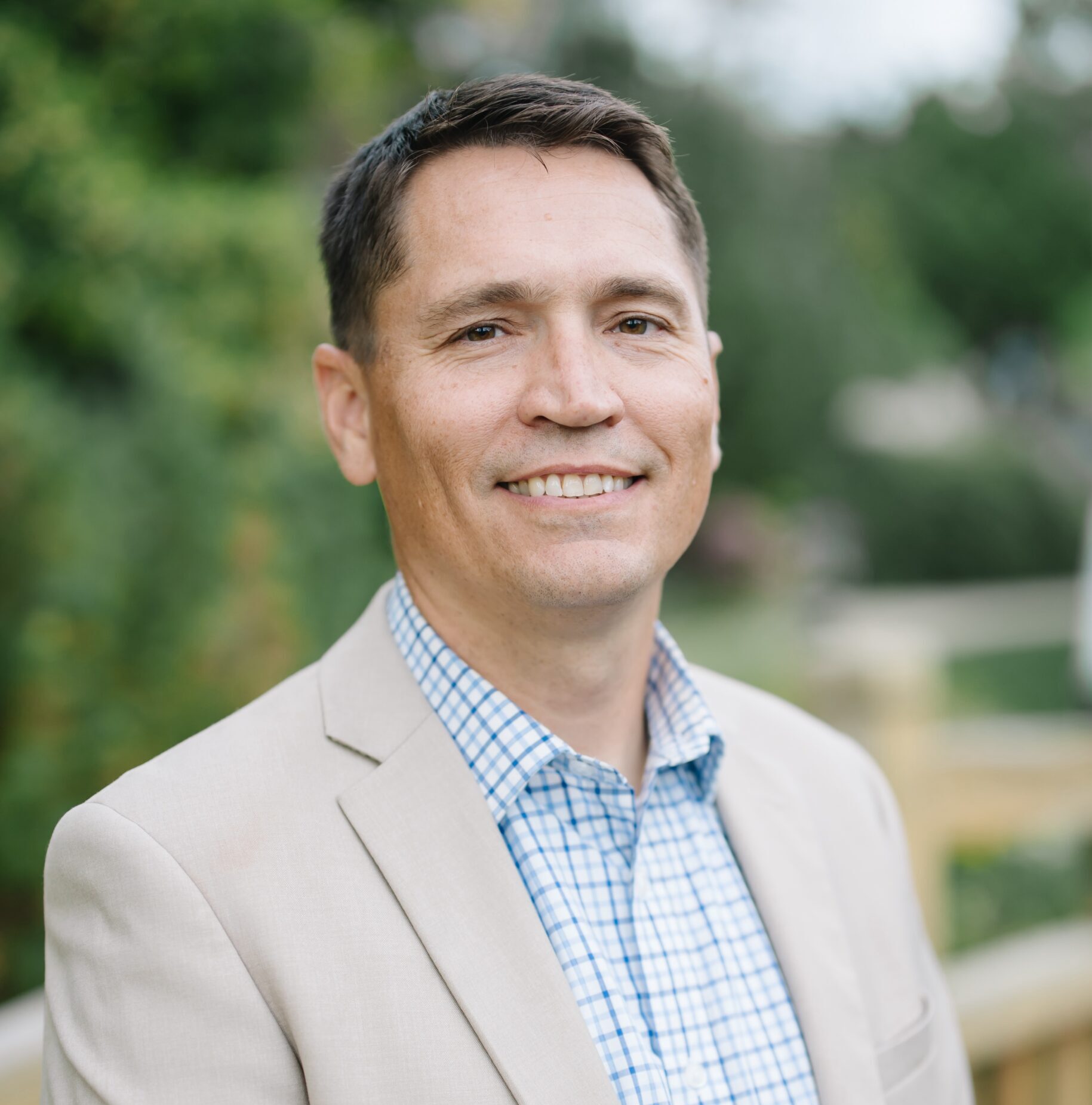Guiding School Communities Through Grief: Communication Strategies After a Student Suicide
Dr. Rich Stowell – Director of Communications, Alpine School District
November 14, 2024

Suicide can cause immeasurable pain to individuals and communities. For those in positions of mentorship, leadership, or authority, feelings of grief and hurt often combine with the overwhelming responsibility to communicate to others.
School leaders experience this dual burden. When a student dies by suicide, adults in the school system experience grief, yet they must be prepared to help others navigate their own pain and loss.
The Importance of Mindful Communication
Communicating after a suicide is part comforting, part counseling, part educating. All three, in the right combination, can help school communities heal and learn, building resilience and turning a risk factor into a protective factor.
We are all connected.
Students experience and depend on peer relationships in a unique way. At a school, adolescents who die by suicide might have interacted with dozens, and up to hundreds, of peers and adult on a weekly basis. Their friendships, and even acquaintances, are more central to their identity than some adults often appreciate. When a suicide happens to a student, it touches so many peers deeply, even if their relationship might have seemed superficial by adult standards.
Adults need to recognize that students can feel the connection with a peer differently than adults do. They will hear about it and talk about it on their terms. They are hungry for information. It’s important to join the conversations quickly to prevent the spread of misinformation and rumors.
Communication Principle:
Know your audience. Get helpful, accurate, and compassionate information into the conversations early so you are not combating misinformation, after the fact.
Avoiding suicide contagion.
Additionally, suicide contagion is real. Sometimes, especially in school setting, suicide clusters can form. Up to five percent of teen suicides occur in clusters, according to NIH statistics.
Experts agree that the way suicide is communicated can reduce the likelihood of contagion. Focusing on the personal and family impact, rather than the manner or circumstances, of death is one way to mitigate the risk of contagion.
It requires deftness from communicators to be a source of accuracy without divulging information that is not helpful.
Communication Principle:
Develop a communication plan regarding suicide. A comprehensive plan should include safe messaging guidelines, clear lane markers about what information is acceptable to share and what is not. It also should remind leaders to identify close associates and communicate with them individually.
Teach people.
All communication is fundamentally an opportunity to teach. When suicide rocks a school community, adults can act as protective factors in a coordinated response. School systems have the advantage that most adults are trained educators– with the training to teach and the compassion to do it sensitively.
Harness the teaching expertise to spread knowledge and deepen relationships. Effective instruction includes a curriculum with lessons, objectives, and learning activities. So too should a curriculum of post-vention. School staff are experts in curriculum design, development, and deployment. Let them be part of a comprehensive response plan.
Communication Principle:
Teaching is a fundamental objective of communication responses to suicide. Structure teaching resources for suicide prevention as you would other teaching resources and leverage the skills of staff to deliver the instruction.
Create a Messaging Campaign
When a crisis happens, communication is always an important component in an organization’s response. Important things deserve plans, and suicide is no different.
Plan.
An effective communication plan has three major components.
The first and most important piece of any plan is to define strategic objectives. In a compassionate response to a suicide, the overarching objectives would likely include to strengthen community and to prevent suicide among at-risk members.
The second major piece is to identify the tools and resources available to meet the objectives. Schools and school systems have email, social media, meetings, and the like. People and their skills are resources as well.
The final piece is to assign tasks to the best personnel to accomplish them. The best organizations have an honest account of who can do what.
It might feel cold to plan for suicide. But the most compassionate thing leaders can do to help their communities during difficult periods is to be ready.
Communication Principle:
Planning is prudent and helps take away some of the stress in the moment, allowing leaders to connect on a more human level in the middle of a crisis.
Empathy.
Communicators need to remember, above all, that those affected by suicide are grieving. One of the most important things to do is build trust by allowing them to grieve appropriately.
It is a heavy responsibility because leaders grieve too. Still, they need to put their audience first by demonstrating empathy. Nothing is less empathetic than beginning a message of condolence with how you (the communicator) feels. This is why “I’m so sorry” can be problematic. It feels formulaic and unthoughtful, true as it may be.
A different approach asks what the audience needs to hear in that moment. “You are important,” “you are valuable,” and “your way of grieving is appropriate.”
Communication Principle:
Think of your audience first. Ask yourself, “what does my reader need to hear right now?” Resist the temptation to begin communications from the first-person point of view.
Humility.
We are still in the early stages of understanding suicide, its causes, and impacts. The way we communicate should reflect that lack of common understanding, even while sharing the best accepted expert information. It is okay if people, especially students, aren’t able to explain exactly how they feel or how to move forward.
It is also okay, and even desirable, for leaders to admit the same. Humility and vulnerability, while often uncomfortable, can go a long way to building trust. That improves the school community as a protective factor.
Principle:
Acknowledge incomplete or developing understanding. Express ways in which your audience and you can learn and grow together. Embrace vulnerability as a trust builder.
Communication can’t undo the hurt caused by suicide. But human-focused communication can help a community heal and grow more resilient.
Building Resilient School Communities
While no communication plan can fully prepare us for every crisis, thoughtful preparation and human-centered messaging can help school communities navigate challenging times together. The principles outlined here—empathy, humility, strategic planning, and educational leadership—provide a foundation for building trust and fostering resilience.
Remember that effective crisis communication is not just about managing information—it’s about strengthening the fabric of our school communities. We create spaces where healing and growth can occur by approaching these difficult conversations with care, authenticity, and an understanding of our audiences.
School leaders’ goal isn’t just to communicate through the crisis, but emerge from it with stronger connections, deeper trust, and better-prepared communities. When we combine careful planning with genuine compassion, we help ensure our schools remain safe spaces where students, staff, and families can find support when needed.

Dr. Rich Stowell
Director of Communications
Alpine School District
Rich Stowell serves as Director of Communications for Alpine School District, Utah’s largest school district serving 85,000 students across 92 schools. His unique background spans classroom teaching, military service, and strategic communications. After beginning his career as a founding teacher in Bay Area charter schools and earning a master’s in mathematics education, Rich served as a public affairs NCO in the U.S. Army. His passion for strategic communications led him to earn a PhD in Communications from the University of Utah, where he later taught alongside teaching at the University of San Francisco. Rich’s work focuses on values-based communications and trust-building, drawing from his experience at educational technology companies like Waterford Upstart and ParentGuidance.org, where he specialized in parent-to-child communication and mental health resources for school communities.

